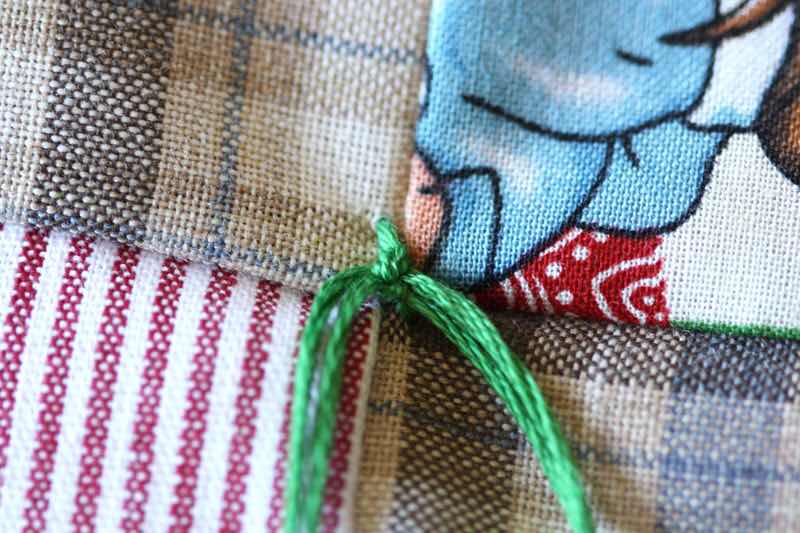Tying is a method of securing a quilt that is intended to be visible. The yarn is fed through the quilt layers with a curved needle and then, tied with a square knot on the top. The tails are either cut an inch long or close to the knot.

Heavy denim quilts are typically tied with yarn. Red is still the most popular yarn color because it hearkens back to a time in the South when indigo and turkey red were the only dyes available. It's the most accurate Civil War quilt you can make.




















Dutch Girl quilts may incorporate yarn tying as part of the girl's hair. My great grandmother might have been the only woman to do this because I couldn't find a photo of one anywhere. The above photos are the only ones I found. Apparently, they're not very popular.
Quilts may also be tied with several strands of embroidery floss.
Ribbon may be used as well.
That ribbon can also be incorporated as part of an appliqué piece.
Tacking is a method of securing a quilt that is intended to blend into the fabric. You can use thread, but I prefer embroidery floss.
Old wool and cotton batting required elaborate stitching to prevent it from shifting. Today's needle punched batting can be quilted every 4 inches. That means, you only need 1 tack in the center of an 8" block that has been stitched in the ditch. The above block is from a faux t-shirt quilt that I made with vinyl heat transfers. Stitching through them would've destroyed the vinyl. They had to be tacked.
Place a ruler across the block about halfway down and mark 4" with a needle.
Place the ruler down the block to the left of the needle and mark that 4" with a needle to find the center.
Pull a single 12" strand of floss from a skein and cut. Thread a size 5 embroidery needle and leave about 2" hanging. Don't tie a knot in the thread.
Insert the needle through the quilt layers and bring the point back up through the top.
Pull the floss through, leaving a 4" long tail on one side.
Feed the floss through the layers several times going through the same holes. You can make an X or French knot, if you like.
To end, run the floss through the first hole and stop. Remove the needle.
Thread the needle with the beginning tail and run it through the opposite hole. Remove the needle.
Flip the quilt over and tie the tails in a square knot.
Cut the tails even.
Thread the needle with the tails.
Insert the needle beneath the fabric about a 1/2".
Pull the thread through and back to gather the fabric a bit.
Cut the tails and release the tension to conceal them.
Buttons are another method of tacking that are commonly found on crazy quilts.
Bedazzling is an 80s innovation that is perfect for tacking a quilt.
Use rhinestones to make a girl's quilt pop.











